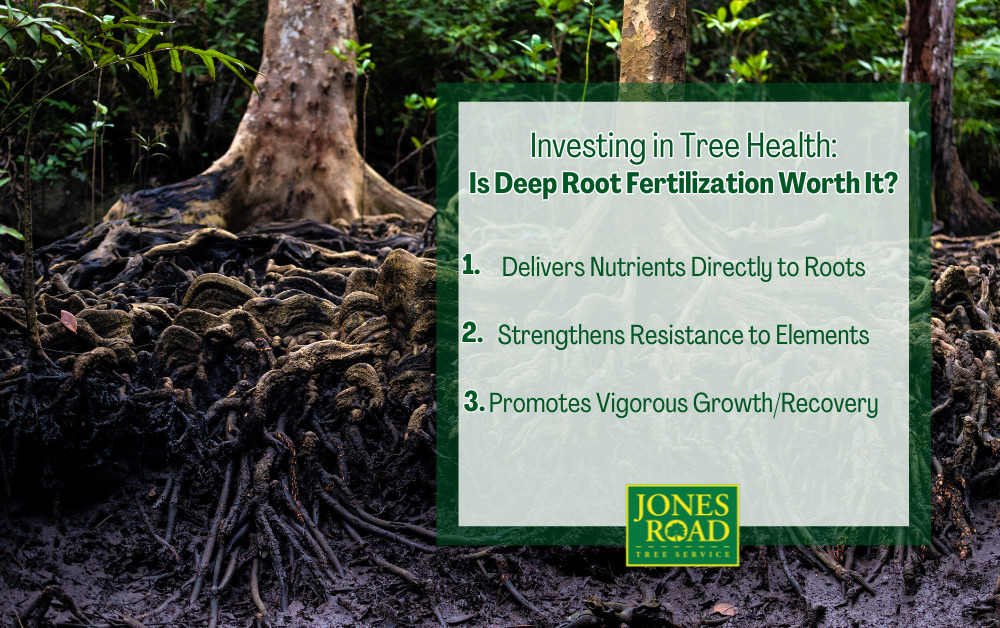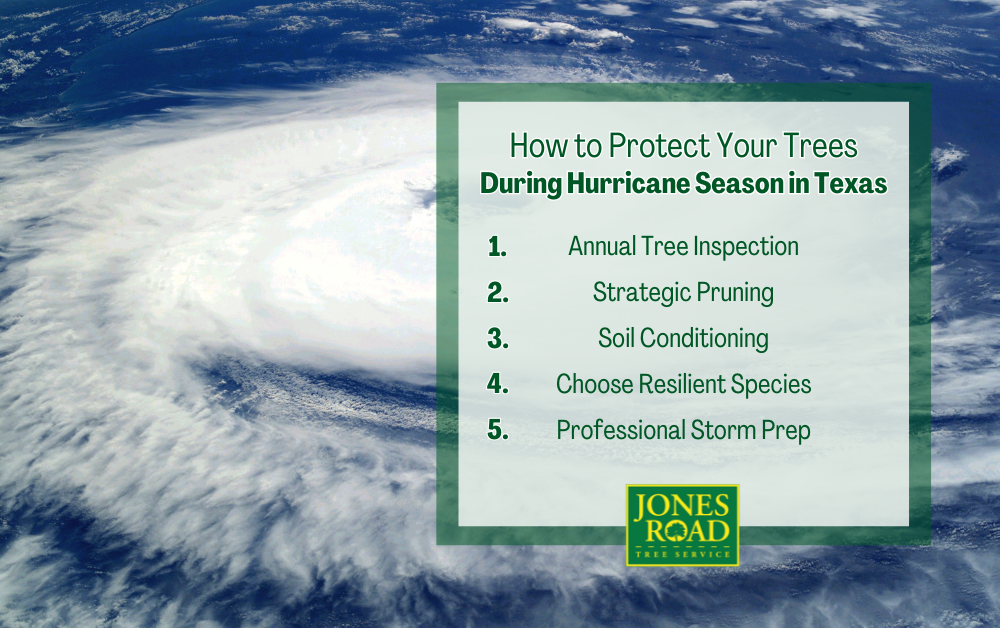Your trees are more than just landscaping. They’re living investments that add beauty, shade, and value to your property. But like any investment, they require care—especially in Texas, where intense heat, drought, and poor soil can take a toll. One of the best ways to safeguard tree health is through deep root fertilization, but is it truly worth the cost? Let’s break it down and help you decide.
What is Deep Root Fertilization?
How It Works
Deep root fertilization is a process where nutrient-rich solutions are injected 8-12 inches into the soil, directly around a tree’s root zone. Unlike surface fertilizers that often get washed away or fail to reach deeper roots, this method targets where trees absorb nutrients most efficiently.
A professional uses a high-pressure tool to deliver a precise blend of fertilizers and sometimes soil conditioners. This means nutrients bypass compacted surface layers, reaching the roots where they can truly support tree health.
Why Standard Fertilizers Aren’t Enough
- Surface fertilizers mostly feed grass and shallow plants.
- They can wash away in rain, or evaporate under the Texas sun before trees absorb them.
- Urban and suburban soils are typically compacted from foot traffic, construction, and irrigation, blocking nutrients from penetrating deep enough.
Deep root fertilization cuts through these challenges—giving your trees what they need, exactly where they need it.
Why Tree Health Matters
Trees Are an Investment
Healthy trees increase your home’s curb appeal, provide shade that lowers energy bills, and can boost property value by thousands of dollars. Mature trees are irreplaceable assets; planting a new one doesn’t give you instant benefits. It can take 10, 20, even 50 years to achieve the size and impact of a tree you might lose today.
Signs Your Tree Might Be Unhealthy
Keep an eye out for these red flags that your trees could be suffering from nutrient deficiencies or root stress:
- Sparse, thinning canopy
- Early leaf drop or unusual color changes
- Dead or brittle branches
- Fungal growths around the trunk or roots
Often, these symptoms tie back to soil issues that deep root fertilization can address.
The Benefits of Deep Root Fertilization
Delivers Nutrients Directly to the Root Zone
By injecting nutrients deep into the soil, your trees’ roots have immediate access. This is critical for established trees that rely on an extensive root system well below surface level.
Strengthens Resistance to Heat, Drought, and Disease
Texas summers are brutal. Without adequate nutrients and strong roots, trees struggle to withstand drought stress, pests, and disease. Deep root fertilization builds resilience, helping trees thrive through tough seasons.
Promotes Vigorous Growth and Recovery
After droughts, storms, or minor disease attacks, trees can rebound more effectively with nutrient support. You’ll often see thicker canopies, stronger branches, and an overall boost in vitality.
Is Deep Root Fertilization Worth the Cost?
Comparing Costs: Fertilization vs. Tree Replacement
A typical deep root fertilization service costs a few hundred dollars depending on tree size and property needs. By comparison, removing a large dead tree could run one to three thousand dollars, and planting a new one means years—if not decades—of waiting for comparable benefits.
When Deep Root Fertilization Pays Off
It makes the most sense for valuable shade or ornamental trees. If you’re noticing early signs of decline, this service can often restore tree health before irreversible damage sets in. It’s especially worthwhile for species like oaks, pecans, and magnolias, which are common across Houston and take decades to mature.
FAQs About Deep Root Fertilization and Tree Health
How often should deep root fertilization be done?
Generally, once a year is ideal for most trees. In highly stressed or nutrient-poor soils, a professional may recommend twice annually.
Can it save a dying tree?
It’s most effective as a preventive or early intervention tool. If a tree is already severely compromised, other measures (or even removal) might be necessary.
Will it help after drought?
Yes. Trees recovering from drought often have weakened root systems that benefit tremendously from targeted nutrients.
Is it safe for pets and kids?
Yes. The solution is injected deep underground, minimizing exposure. Always use a reputable tree care company that follows safety standards.
Why Choose a Professional for Deep Root Fertilization?
The Jones Road Tree Service Difference
At Jones Road Tree Service, certified arborists assess each tree’s unique needs, from species to soil conditions. We custom-mix nutrients designed for Houston’s climate and soils, and use specialized equipment to deliver them to the precise depth.
Unlike generic lawn services, we don’t treat every tree the same. You get a personalized plan to improve deep root fertilization and tree health together.
Avoid DIY Risks
Trying to do this on your own can lead to overfertilization, soil imbalance, or even root damage. Professional application ensures your investment is protected and effective.
Ready to give your trees the care they deserve? Contact Jones Road Tree Service today for a free consultation.
Invest in Tree Health Now for Long-Term Benefits
Investing in your trees is investing in your home. Deep root fertilization is one of the most effective ways to protect your landscape from Texas heat, drought, and disease—keeping your trees healthy, strong, and beautiful for years to come.
Don’t wait for visible decline. Strengthen your trees now. Call Jones Road Tree Service to schedule a professional deep root fertilization and keep your trees—and property value—thriving.
Concerned about your trees? Schedule a tree health inspection with Jones Road Tree Service to get expert answers.




